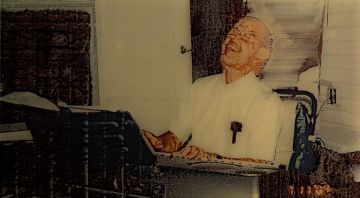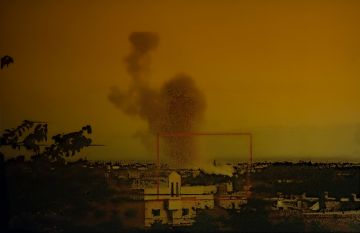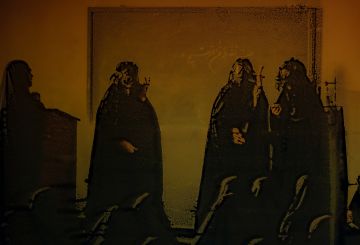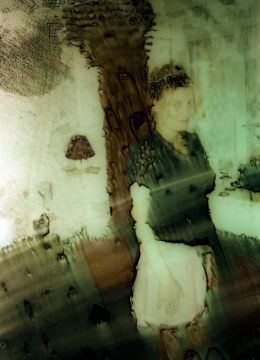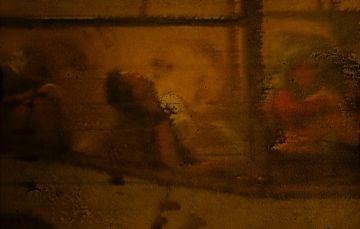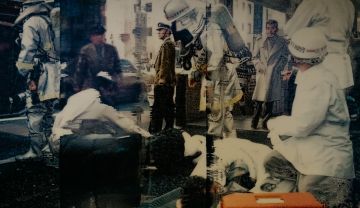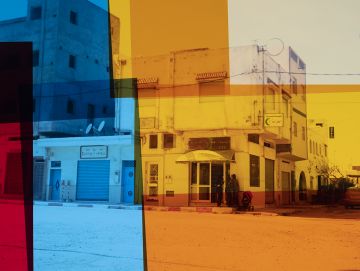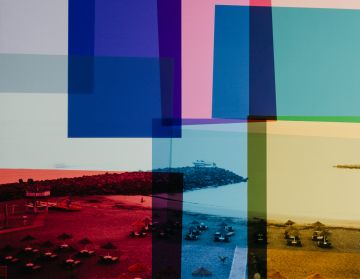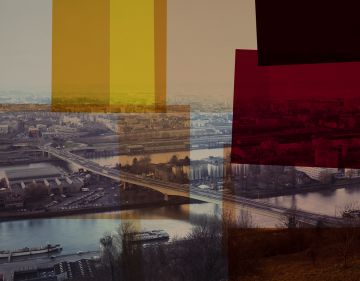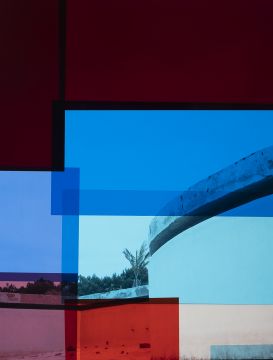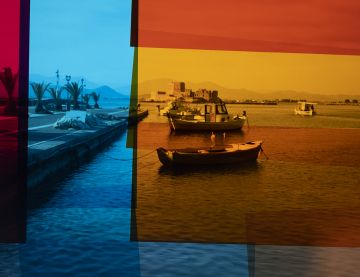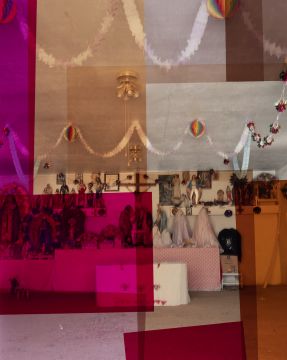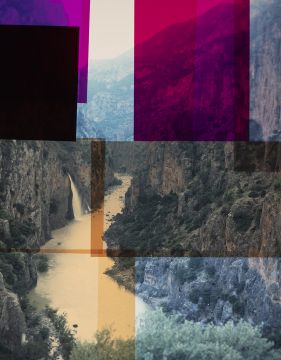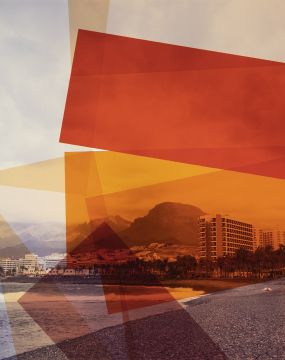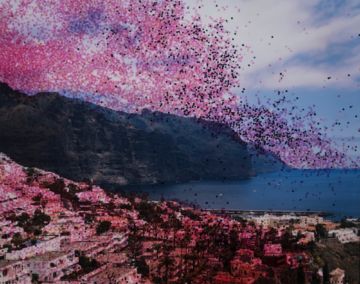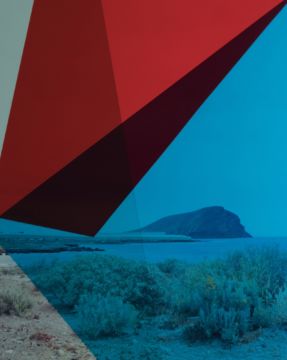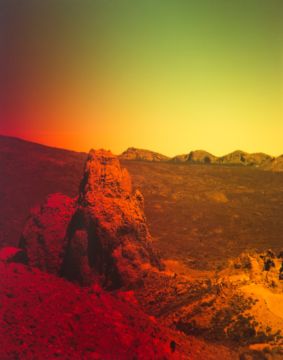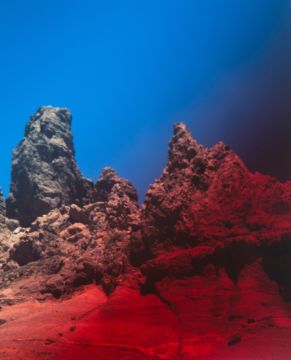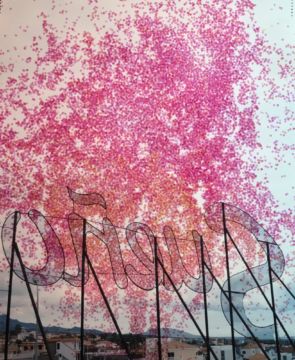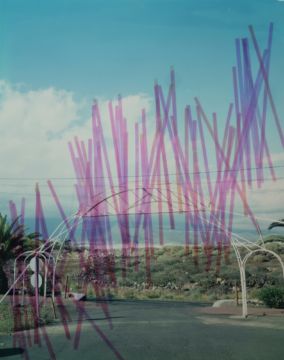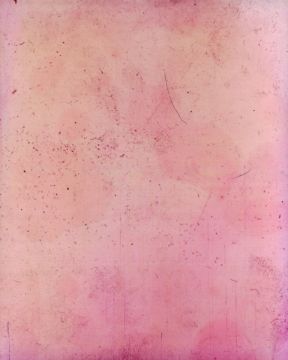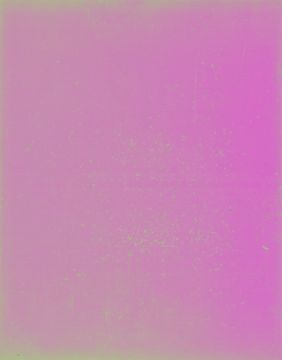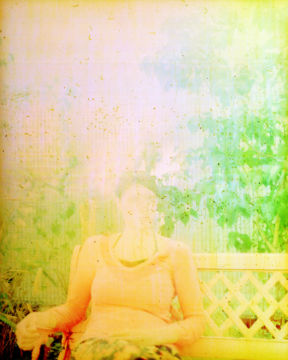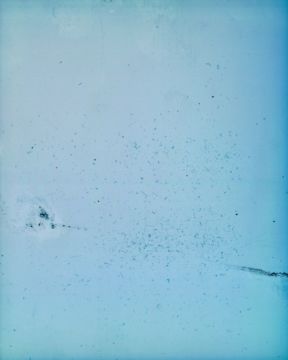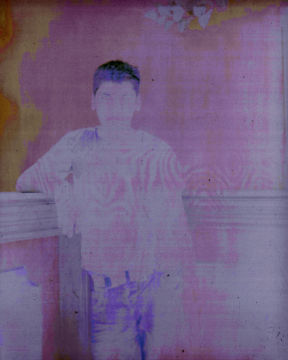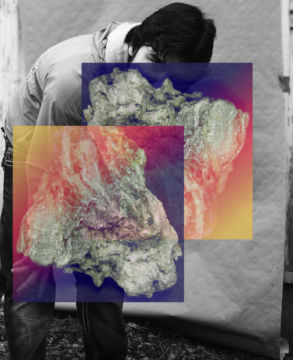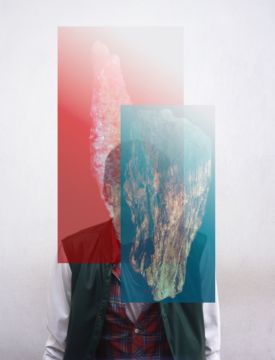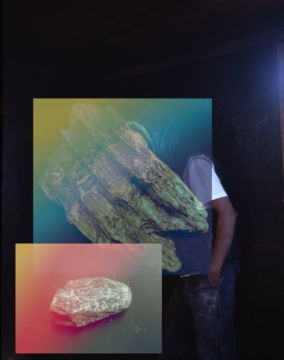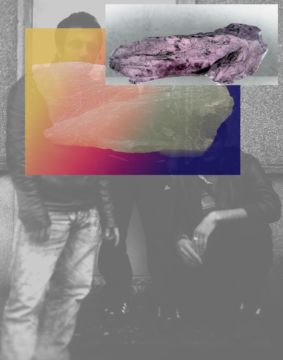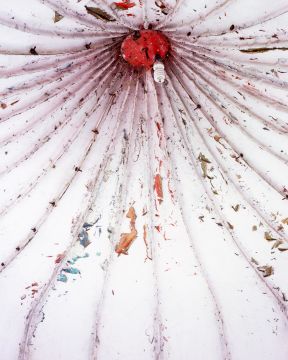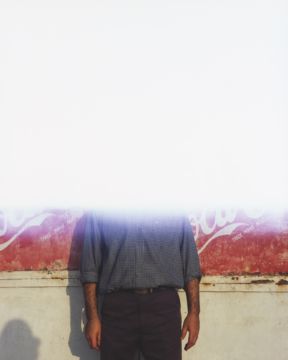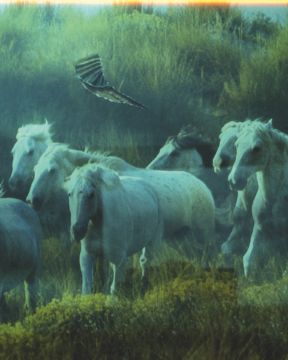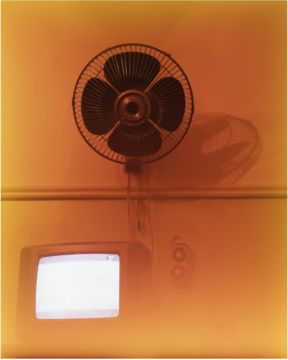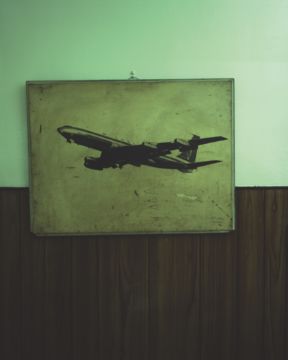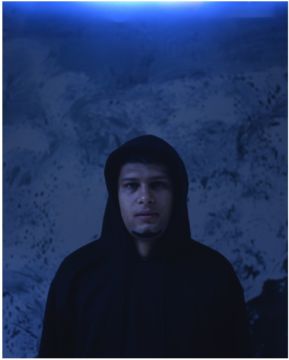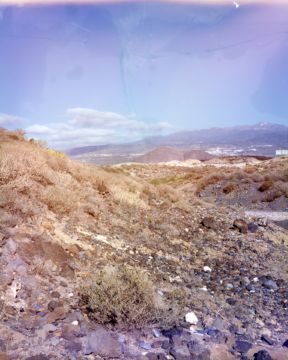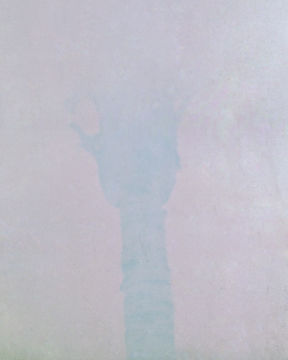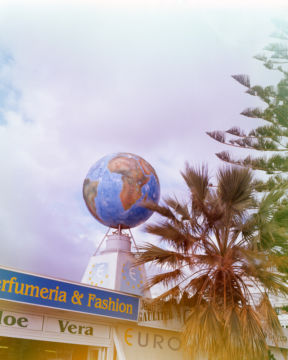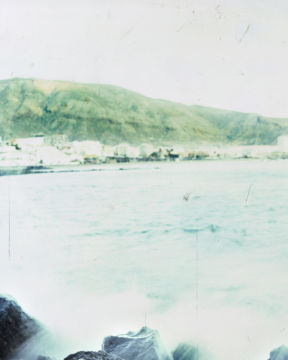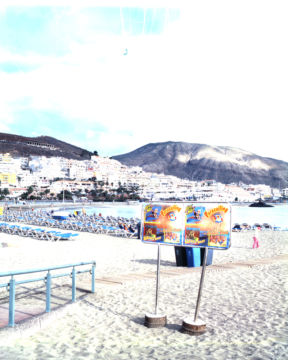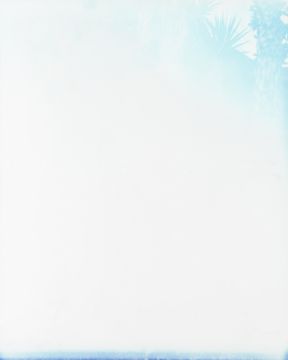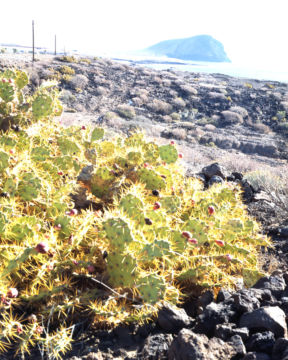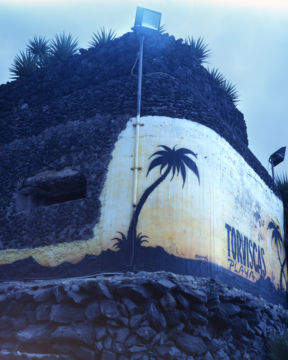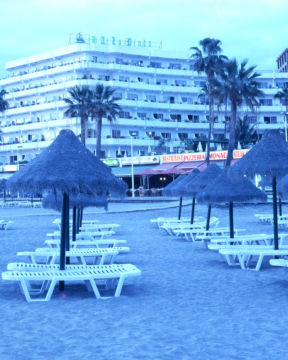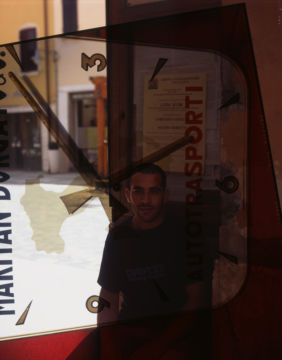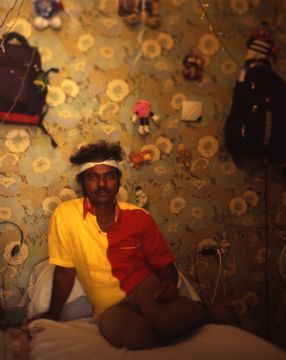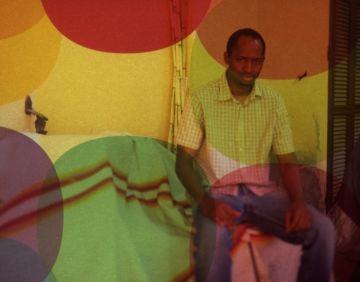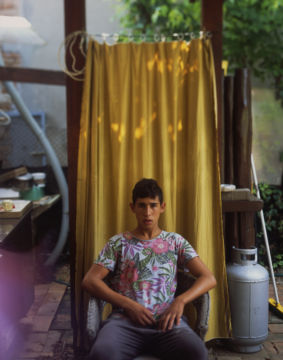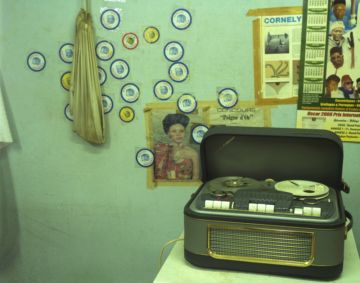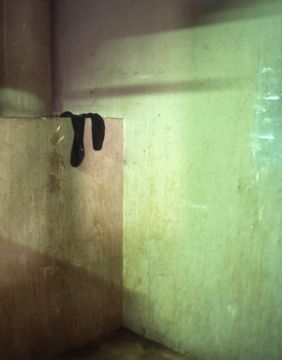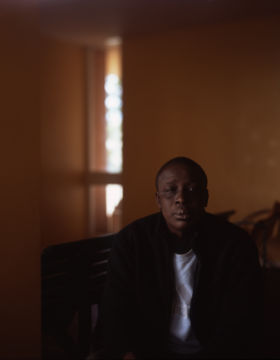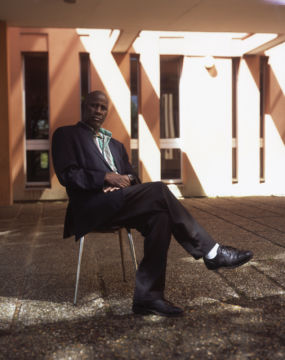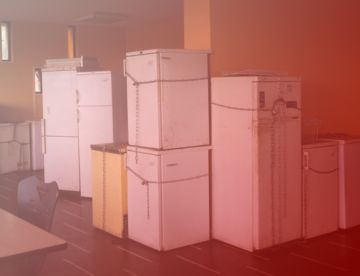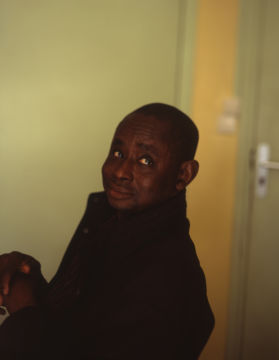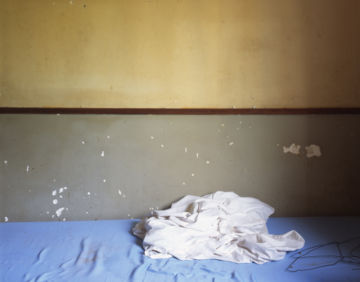Chemical Reaction
‘These photographs show the fallout of conspiracy and control. They are more than records or documents of events that may be vaguely remembered and poorly recalled. They show the texture of su ffering and memory. The vapour of poisons can be seen bubbling and reacting on the surface of the paper, and the result is one of serendipity and coincidence as the chemical reaction manifests itself in these prints. The pulled ink on the prints is like the slow dragging through time and the slow erasing of victims throughout history. Kurtis has researched instances of nerve agent and chemical attacks. He has looked into the use of poison as political power, and has screen grabbed images to further explore his findings. The chemical reaction that we expect to see in typical photographic processes has been co-opted into this story of propaganda and now the paper becomes another document in this growing body of research. The surface breaks down under this reaction and leaves an imprint of confusion as these momentous events fade from collective memory. Kurtis has manifested delicate, reappropriated surface that holds history, intrigue, and time.’
– Mariama Attah
Lockdown Project
During the Covid-19 lockdown, Seba Kurtis continued his Artist in Residence at Ucen Manchester in his house. Using the situation as an opportunity to create new work from his vast archive of negatives using the new data of the pandemic available to the public, combined with samples of light correction filters to produce images which appear as though seen through a surreal kaleidoscope - this itself a metaphor of each individual’s unique experiences of the lockdown. Kurtis has been working in areas of conflict over the last 12 years and is no stranger to the harsh realities in life that illegal immigration brings. In this isolation he has reflected on and made use of his own experiences by re-visiting past projects that didn’t make the final edit. He is now showing them in a new light amended by a form of intervention or collage used directly on his films to represent data on Covid-19. The information provided regarding the lockdown develops continuously - ‘Map of the outbreak in Arizona’, ‘Confirmed cases in France’, ‘Care Home deaths are still rising in the UK’. Kurtis represents the governmental imposed Lockdown guidance such as social distancing, combining this data with his empty landscapes and cities to make visible the rapid spread of coronavirus. –
A. Mosley
PARAISO
In his series ‘Paraíso’ Seba Kurtis captures the landscape where refugees first arrive after their hazardous journey across the Mediterranean Sea. Although many of them tragically die during this voyage. Kurtis reacted to this occurrence in his photographic series ‘Drowned’ in order to reframe the fatalities that are often documented in the news as mere numbers. Nevertheless, statistics and graphs are important for ‘Paraíso’, as Kurtis uses glitter in his photographs to visually trace and translate quantitative information about the Canary Islands, where surveys show socially and financially difficult environments with grievous consequences. In spite of it all, the Islands continue to be the destination of large numbers of illegal migrants. And thus, a dream of paradise is suddenly fading from the photograph with the Sueño sign (the artist’s wordplay in Spanish: dream – sueño, paradise – paraíso).
Heartbeat
Kurtis’s photography is often created by manipulating the negatives. Interventions during the developing process or in the finished image describe his aesthetic signature, such as the ‘Heartbeat’ series, which presents invisible portraits of refugees. By these means, Kurtis creates a visual parallel with the way the police use heartbeat detectors to search for illegal refugees hiding inside cargo trucks. Unseen, yet exposed. The obscure image in these photographs is made by overexposing the film, and only a closer look reveals the imperceptible silhouettes. This technique paradoxically helps make the overlooked situation of migrants more visible. The method of using the faded effect also blurs a purely documentary nature of Kurtis’s photography, representing the vague memory of disappeared persons and unfulfilled expectations.
Talcum
Seba Kurtis’ photographic collages ‘Talcum’ refer to an incident when illegal refugees from the Middle East were hiding in a truck transporting talcum powder (originating from the Arabic word ‘talq’) in order to get over the British border. Images of the minerals cover the faces of immigrants who must remain in hiding from state authorities during their illegal stay. The rocks in the foreground also stand for the prioritization of the inorganic material over the worth of human lives on our economic scale of values. The photography of Seba Kurtis and his investigation into the environment of illegal migration attempt to restore balanced and humane dimensions of migrants’ identity. The overexposed and aesthetically intense images help change our negative perception of illegally migrating people and zoom in on their own complicated journeys and circumstances, which are part of global political phenomena.
A few days more
'Seba Kurtis ‘A few days more’ series pictures waiting Egyptian immigrants on the coast of North Africa and the increasing travel hazards due to the lengthier journey across the Mediterranean caused by Italian closed-border policies. [For this series] Kurtis chose […] to open the camera’s chamber while taking some specific shots. Instead of solarizing all the material, the project includes some partially or almost completely fogged images along with copies of undamaged negatives. Paradoxically, undamaged images are mainly depictions of damaged objects (for instance, a weather-worn parasol where the immigrants wait for their ship). This series of photographs presents a non-homogeneous corpus in which the abstract image of an almost complete fogging coexists with disturbing erasure of the face of a portrait due to a partial solarization or the depiction of damaged objects in unvandalized images. […] The interplay between damage and no damage, both of the negatives and the portrayed objects, suggests the existence of different regimes for the technical devices. The state administration of migrants determines, through the ‘correct use’ of technical devices, which lives are valuable and which are not, which bodies matter and which do not. On the contrary, the solarized face of a waiting migrant standing in front of an iconic Western soft-drink poster is an eloquent example of the hesitation of indexicality and of the blurring of photographic identification to represent irregular migration.’
– Agustin Berti and Andrea Torrano, Politics of (Un)Documented, 2014
Drowned
In the series ‘Drowned’ Seba Kurtis reacted to the tragical occurrence of refugees dying during their voyage across the Mediterranean Sea, in order to reframe the fatalities that are often documented in the news as mere numbers. For this series the artist used a particular technique, immersing the film in the sea in order to damage the chemical makeup and consequently the developed images. The unstable chemical process was caused by the destructive salt water. This is also a metaphorical affliction on the lives of migrants, as they board ships and cross harsh seas towards European shores that ultimately aren’t any more hospitable.
Adriatic
'The Adriatic coast of Italy serves as a landing point for illegal immigrants from Europe's poorest country, Albania, just 72 kilometres away by sea. It is estimated that every year criminal organizations ferry about 50,000 illegal immigrants across this strip of sea. Many of these immigrants embark with the hope of finding work in Germany or other EU member states. The ancient cities of Cesena, Rimini, Savignano sul Rubicone are the background to Seba Kurtis' latest project Four Nights and a Thousand Lives. The title refers to the short time he had available to shoot the images and the stories he heard during this period. The photographs in this project possess beauty and straightforwardness and give rise to a desire to learn more about the immigrant worker's life, to understand whether it is a life of tragedy, heroism, fantasy or condemnation. ‘Kurtis' portraits come to life from memories and personal stories and serve as a collective portrait and self-portrait at the same time.’ – Andrew Moseley
Foyer
Seba Kurtis was interested in the opposite poles of ‘migration’, a term whose contours are lost in the mirage of the horizon: the migrant allegedly in transit, in the camp, and the one who should have reached his destination, in his home country. But only one look at the accommodation in the camp and the willingness they show - for lack of other possibilities - to anchor themselves in the earth and structure a living space. Here at home, the refrigerators seem to be huddled together, each one weighted down by its own chain, as if they wanted to counteract a possible capsize. Here, too, the precariousness of the migrant condition becomes apparent again.
